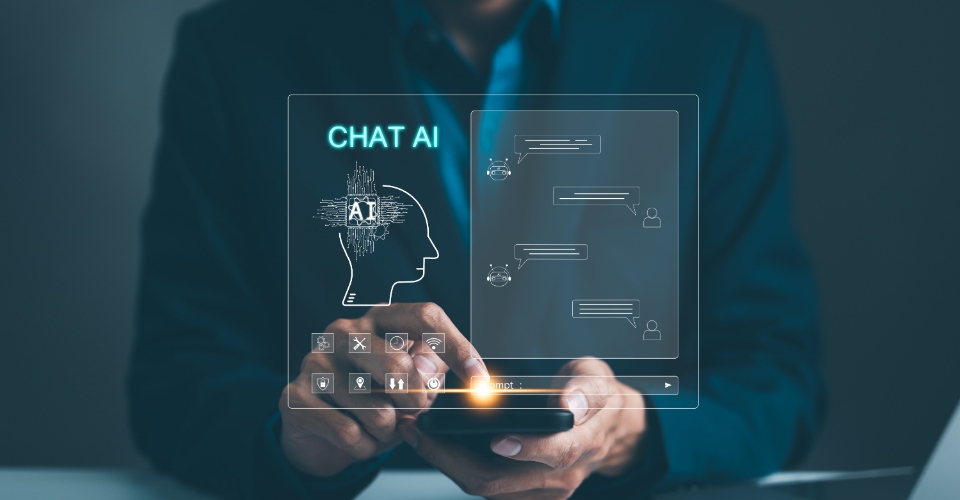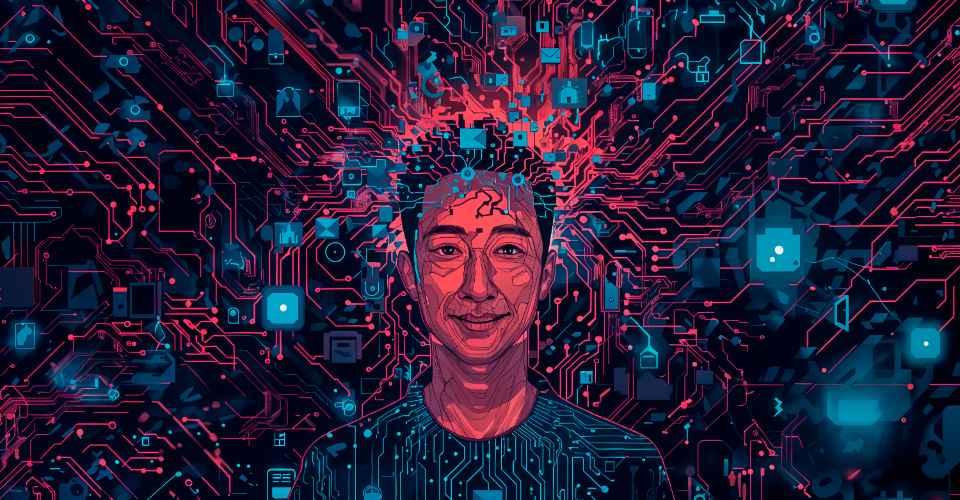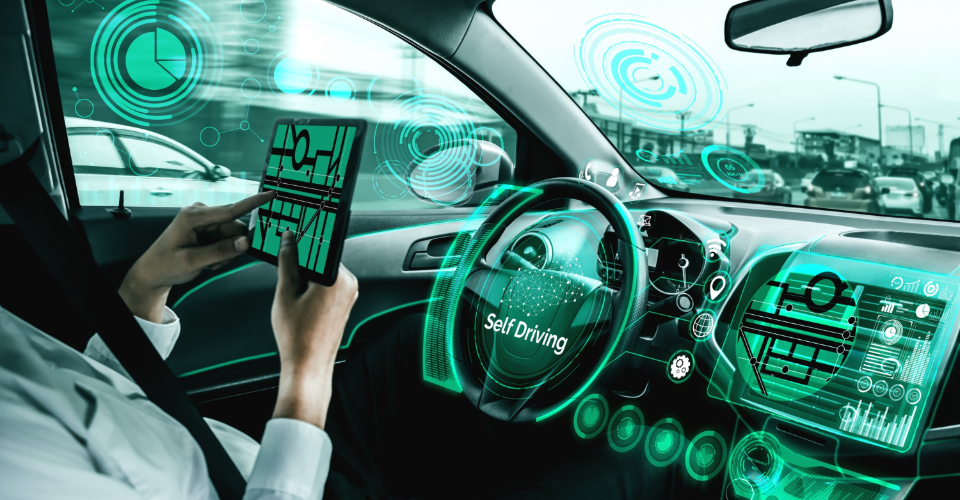The Rise of Artificial Intelligence (AI)
Artificial Intelligence (AI) is no longer a distant dream but a practical reality that is transforming various industries across the globe. From self-driving cars to intelligent customer service chatbots, AI is integrating into our lives in ways that were once thought to be purely speculative. As businesses and individuals begin to rely more on these technologies, understanding AI’s core principles and capabilities has become essential.
In this article, we’ll explore AI models, their applications, strengths, limitations, and how they impact industries and everyday life. Whether you are new to AI or an industry professional, this guide will provide valuable insights into the power of AI integration and the future of artificial intelligence.
What is Artificial Intelligence (AI)?
Artificial Intelligence (AI) refers to the simulation of human intelligence in machines that are programmed to think, learn, and solve problems. AI encompasses a variety of technologies, including machine learning, deep learning, natural language processing, and computer vision, among others. These technologies enable machines to perform tasks that typically require human intelligence, such as decision-making, language understanding, and pattern recognition.
AI models are at the heart of this technological evolution. These models use vast amounts of data to learn, adapt, and make decisions without direct human intervention. By mimicking the way the human brain processes information, AI models are capable of improving over time, becoming more accurate and efficient with each new dataset they process.
In recent years, AI integration has become a cornerstone of technological advancements in sectors ranging from healthcare and finance to marketing and manufacturing. For instance, AI-powered tools like optical character recognition (OCR) can extract data from images, turning unstructured content into valuable, actionable insights.
The Four Types of Artificial Intelligence (AI)
Artificial Intelligence can be categorized into several types based on its capabilities and development stages. Understanding these categories is key to grasping the potential and limitations of AI systems.
- Reactive Machines:
These are AI systems designed to perform a specific task based on pre-programmed instructions. They cannot adapt or learn from new data. A prime example is IBM’s Deep Blue, which defeated the world chess champion, Garry Kasparov, in 1997. - Limited Memory AI:
This type of AI can learn from historical data and improve its performance over time. Modern AI systems, like self-driving cars, use limited memory AI to enhance their decision-making process by continuously analyzing new data. - Theory of Mind AI:
Although it does not yet exist, theory of mind AI refers to systems that can understand human emotions, thoughts, and beliefs. It aims to emulate the way humans interact and make decisions based on social and emotional cues. - Self-Aware AI:
This is the ultimate goal of AI development—machines that are aware of their own existence and can perform tasks with the cognitive and emotional abilities of humans. Self-aware AI is still a concept for the future, yet it presents the most significant potential for revolutionizing technology.
What AI Can Do: Strengths and Limitations
AI is an immensely powerful tool, capable of performing a variety of tasks that were once the sole domain of humans. However, like all technologies, it has its strengths and limitations.
Strengths of AI Models:
- Automation: AI can automate repetitive tasks, saving time and reducing human error. For example, AI models used in robotic process automation (RPA) can streamline tasks such as data entry, analysis, and report generation.
- Data Processing: AI models can analyze massive amounts of data faster and more accurately than humans. This ability to handle complex datasets has revolutionized fields like healthcare, where AI helps in diagnosing diseases or predicting patient outcomes.
- Predictive Power: AI’s ability to analyze patterns enables it to make predictions about future trends. In business, AI models help predict customer behaviors, sales trends, and supply chain needs.
Limitations of AI:
- Lack of Creativity: While AI can replicate existing patterns and processes, it does not possess true creativity or the ability to think outside predefined rules.
- Dependency on Data: AI models require large datasets to learn from. Poor or biased data can lead to flawed outcomes or perpetuate existing biases in the models.
- Ethical and Legal Issues: The rise of AI raises questions about privacy, accountability, and job displacement, making it necessary for regulations to evolve alongside technology.
AI and Machine Learning: Understanding the Connection
AI and machine learning (ML) are closely related but distinct concepts. Machine learning is a subset of AI that focuses specifically on the use of algorithms to allow systems to learn from data. While AI encompasses a broader set of technologies aimed at simulating human intelligence, machine learning focuses on enabling machines to recognize patterns, make decisions, and improve their performance over time based on the data they encounter.
Supervised Learning is one of the most common techniques in machine learning, where AI models are trained on labeled data to predict outcomes. For example, a machine learning model might be trained to recognize images of cats and dogs based on a dataset that includes labeled examples of both. Over time, the model becomes better at classifying new, unseen images.
Advantages and Disadvantages of Artificial Intelligence
AI offers numerous advantages across industries, but its implementation is not without challenges.
Advantages of AI Models:
- Increased Productivity: AI can significantly boost productivity by automating time-consuming tasks. In customer service, AI-powered chatbots respond to inquiries 24/7, improving response times and freeing human agents for more complex issues.
- Improved Accuracy: AI can reduce human error in decision-making, improving outcomes in industries like healthcare, finance, and law enforcement.
- Cost Savings: By automating processes and reducing the need for human labor, AI can lead to substantial cost savings, especially for businesses that operate on large scales.
Disadvantages of AI Models:
- Job Displacement: As AI automates more tasks, there is a concern about job loss, particularly in sectors that rely heavily on routine manual labor.
- Security Risks: AI systems can be vulnerable to cyberattacks, particularly in critical areas like healthcare or finance, where the stakes are high.
- Bias and Fairness: AI models can inherit biases from the data they are trained on, leading to unfair or discriminatory outcomes. It is essential for developers to ensure that AI systems are designed and trained with fairness and inclusivity in mind.
The Future of Artificial Intelligence: Trends and Predictions
The future of AI models looks incredibly promising, with several key trends expected to shape the landscape in the coming years. As AI continues to evolve, we can expect more sophisticated AI systems that integrate seamlessly into our lives and work.
- Continued Growth in AI Capabilities: AI models will become more intelligent and capable of handling increasingly complex tasks, particularly in industries such as healthcare, finance, and logistics.
- Ethical AI: As AI models become more pervasive, there will be an increased focus on ethical AI development. Ensuring that AI is fair, transparent, and accountable will be key to maintaining public trust.
- AI and Human Collaboration: Rather than replacing humans, AI is expected to augment human abilities, helping individuals make better decisions, solve problems faster, and become more productive.
AI Models for Boosting Productivity in Business
AI integration into business processes has proven to be a game-changer. By automating tasks, improving efficiency, and enabling data-driven decision-making, AI models are helping companies unlock new levels of productivity.
- Customer Service Automation: AI-powered chatbots and virtual assistants are now commonplace in customer service. These tools handle basic inquiries, manage scheduling, and even provide product recommendations, all of which free up human agents for more specialized tasks.
- Predictive Analytics: AI models that leverage predictive analytics help businesses anticipate market trends, optimize supply chains, and better understand customer preferences, leading to improved planning and decision-making.
- Operational Efficiency: From logistics to inventory management, AI models enable businesses to streamline operations, reducing waste and increasing overall productivity.
The Impact of AI Models on Our Future
The potential of AI models is immense, and as these technologies evolve, they will continue to shape our world in ways we can’t yet fully predict. By automating routine tasks, enhancing decision-making, and driving productivity, AI is already making a significant impact across industries.
As businesses, governments, and individuals begin to adopt AI more widely, the need for ethical guidelines, continuous learning, and transparent development processes will become even more important. Ultimately, AI integration promises to revolutionize the way we live and work, driving efficiencies and creating new opportunities for innovation and growth.
Artificial intelligence is not just a tool for today—it’s a technology that will define the future. As you explore AI further, remember that its power lies not just in its ability to mimic human intelligence, but in its potential to augment and enhance our capabilities in ways we are only beginning to understand.
Exploring the Benefits and Real-World Applications of AI Models
Artificial Intelligence (AI) has shifted from being a theoretical concept to a critical tool for modern businesses, industries, and even daily life. The widespread integration of AI models is proving to be transformative across numerous sectors, unlocking new possibilities for innovation, efficiency, and productivity. In this section, we will discuss the practical applications and real-world benefits of AI models, shedding light on how they are enhancing industries and shaping the future of technology.
AI in Healthcare: Revolutionizing Patient Care and Research
One of the most impactful areas where AI models are being integrated is healthcare. From personalized medicine to administrative support, AI is improving the quality of care and making medical processes more efficient.
- Predictive Analytics for Early Diagnosis: AI models are now capable of analyzing large sets of patient data to detect early signs of conditions such as cancer, diabetes, and heart disease. These models can help doctors diagnose patients earlier, enabling timely treatment and potentially saving lives.
- Personalized Medicine: AI systems can analyze genetic data and medical histories to develop individualized treatment plans for patients. This allows for more precise care, improving outcomes and reducing the likelihood of adverse effects.
- AI in Drug Discovery: AI-powered models are revolutionizing drug discovery by simulating the effects of various drug compounds in the human body. This accelerates the process of developing new medications, reducing the time and cost associated with bringing a drug to market.
- Administrative Efficiency: AI can automate scheduling, billing, and patient management tasks, allowing healthcare providers to focus on patient care. This reduces administrative burden and operational costs.
AI in Finance: Enhancing Efficiency and Risk Management
The finance industry has quickly adopted AI integration for its potential to improve accuracy, enhance decision-making, and optimize operations. Here are some ways AI models are reshaping the financial landscape:
- Fraud Detection and Prevention: AI models are able to analyze transaction data in real-time to identify suspicious behavior, helping banks and financial institutions prevent fraudulent activities. The machine learning models continuously adapt and improve as they process new data.
- Algorithmic Trading: AI models are used in high-frequency trading, where they analyze market data and execute trades at speeds and volumes far beyond human capabilities. These models can process vast amounts of information, predicting trends and making informed trading decisions within seconds.
- Risk Assessment: In the lending industry, AI models are used to evaluate loan applications by assessing a wider range of factors than traditional credit scoring methods. This helps lenders make more informed decisions and reduces the risk of defaults.
- Customer Service Automation: AI-powered chatbots and virtual assistants are increasingly being used to handle routine customer queries, such as balance inquiries and loan information. These AI systems provide quick and accurate responses, enhancing customer satisfaction and operational efficiency.
AI in Manufacturing: Streamlining Production and Reducing Costs
AI models are making waves in the manufacturing industry, where they optimize processes, enhance product quality, and drive down costs.
- Predictive Maintenance: AI systems use data from sensors embedded in machinery to predict when maintenance will be required. By identifying issues before they lead to breakdowns, AI helps manufacturers avoid expensive repairs and downtime.
- Robotics and Automation: AI-driven robots are now common in factories, performing tasks such as assembly, packaging, and quality control. These robots are faster, more accurate, and more consistent than human workers, resulting in increased productivity and reduced errors.
- Supply Chain Optimization: AI models analyze data across the supply chain to predict demand, optimize inventory levels, and improve distribution. This results in more efficient operations, reducing waste and ensuring that products reach consumers more quickly.
- Product Quality Control: AI models using computer vision technology can detect defects in products at various stages of the manufacturing process. This ensures that products meet quality standards and reduces the chances of defective items reaching consumers.
AI in Customer Experience: Improving Engagement and Satisfaction
AI is also transforming how businesses engage with their customers. Through AI models, companies can provide more personalized and responsive experiences, leading to higher customer satisfaction and loyalty.
- Personalized Recommendations: AI models, particularly those based on machine learning, are widely used in e-commerce and entertainment to provide personalized recommendations. For example, platforms like Amazon and Netflix use AI to suggest products or movies based on past behaviors and preferences.
- Voice Assistants and Chatbots: AI-powered virtual assistants like Siri, Alexa, and Google Assistant are becoming integral to consumer electronics. These assistants make it easier for consumers to interact with devices, perform tasks, and get answers quickly, improving overall user experience.
- Sentiment Analysis: AI models are used to analyze customer feedback from social media, reviews, and surveys to determine customer sentiment. This helps businesses understand customer needs, identify pain points, and tailor their offerings accordingly.
- Omnichannel Support: AI chatbots and virtual assistants can interact with customers across multiple communication channels (such as social media, email, or live chat). This unified support improves customer satisfaction by providing consistent service at all times.
Challenges and Ethical Considerations in AI Integration
Despite its numerous benefits, the integration of AI models is not without challenges. Several factors must be addressed to ensure the responsible development and use of AI technologies.
Ethical Dilemmas and Bias
One of the major concerns in AI development is the potential for bias in machine learning models. AI models are only as good as the data they are trained on, and biased data can result in biased outcomes. For example, an AI model trained on biased hiring data could perpetuate discrimination in recruitment processes.
- AI Fairness: Ensuring that AI models are developed with fairness in mind is crucial. Developers need to create algorithms that avoid reinforcing societal biases related to race, gender, and socioeconomic status.
Privacy and Security
AI systems process vast amounts of data, including personal information. It is essential to protect user privacy and ensure that AI models adhere to data protection laws like GDPR.
- Data Security: With the increasing reliance on AI for tasks like healthcare diagnosis and financial transactions, safeguarding the data being processed is more important than ever. Implementing robust security measures is essential to prevent data breaches.
Job Displacement
AI’s ability to automate repetitive tasks is one of its greatest strengths, but it also raises concerns about job displacement, especially in industries like manufacturing and customer service.
- Upskilling the Workforce: To mitigate the potential negative impact on employment, businesses must invest in retraining programs to help workers transition into roles that require higher-level skills. AI will create new job opportunities, but these require a different set of competencies.
The Future of AI: What’s Next for AI Models?
The future of AI models looks promising, with continuous advancements leading to increasingly intelligent systems. As AI models become more sophisticated, the following trends are expected to dominate the future of AI:
- Autonomous Systems: AI models will power more autonomous systems, including self-driving cars, drones, and robots, which will operate more efficiently and safely than human-controlled systems.
- AI-Driven Innovation: In fields like biotech, materials science, and energy, AI models will drive innovation by simulating complex experiments and analyzing large datasets to uncover new solutions.
- Human-AI Collaboration: Rather than replacing humans, AI models will increasingly complement human abilities. Collaboration between humans and AI will lead to more efficient decision-making and problem-solving across industries.
Embracing AI for the Future
As we continue to explore the capabilities and applications of AI models, it’s clear that these technologies are transforming industries, improving efficiencies, and shaping the future of innovation. From healthcare to finance and customer service, AI is revolutionizing the way businesses operate and how consumers interact with technology.
By understanding the potential of AI integration, businesses can harness the power of AI to enhance productivity, deliver better customer experiences, and drive long-term growth. As AI continues to evolve, its impact on society and industries will only grow, paving the way for a future driven by intelligence, efficiency, and innovation.
Whether you are a business leader looking to integrate AI or a consumer curious about its benefits, embracing AI models today will position you to thrive in tomorrow’s technology-driven world.
This detailed analysis covers the core aspects of AI and its transformative power across industries, emphasizing the need for ethical, responsible, and effective implementation.



















Leave a Reply